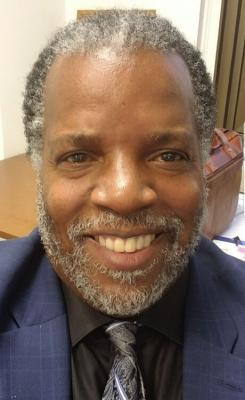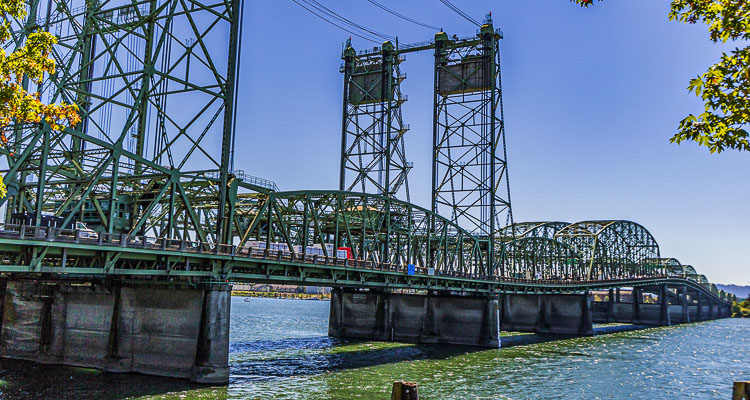Clark County Today Editor Ken Vance shares the reasons for his fear that the current attempt to create an I-5 Bridge replacement project will end in a similar fate as the CRC

Earlier this week, during a briefing of the members of the Executive Steering Group (ESG) and the Bi-State Bridge Committee of Washington and Oregon legislators, Interstate Bridge Replacement Program (IBR) Administrator Greg Johnson said his team needed more time to provide the much-anticipated “solution’’ to the Interstate Bridge Project. The solution was expected to be made public in March, but now Johnson says it won’t come until July.
Considering the fact that Johnson and his team are attempting to provide a proposed solution that will please lawmakers, citizens, interest groups and stakeholders from both states, as well have a project that threads the needle of requirements for federal funding, at first glance a delay of three months doesn’t move most needles of suspicion or concern. However, it does continue to reinforce a fear that I have held, essentially, since the IBR program was created in 2019.
After eight years of planning that spent an estimated $200 million, the Columbia River Crossing (CRC) failed in July 2013 due to Republican opposition in the Washington State Senate. The Senate vote was just the final nail in the coffin. There were obviously many other factors that led to the failure of the CRC. Nevertheless, it meant that all that time and public money was spent and virtually nothing was accomplished.

So, several years later, the IBR Program picked up the baton and attempted to restart the race. The goal was not only to seek an I-5 Bridge replacement project agreeable to all involved, but to also prevent $140 million in federal funding allocated for the CRC from being recalled (the deadline for which has been extended to 2025).

It should be noted that Washington’s portion of that was reportedly $46 million. Ironically, Washington lawmakers approved $35 million for the IBR Program. And, because the IBR Program is handcuffed to the CRC’s Environment Impact Statement and the original Purpose and Need statement, that has presented several challenges for this current effort. I’m not so sure we wouldn’t have been better off just paying back the $46 million, which is only a net savings of $11 million. That way we could have started off with a fresh project.
My fear has always been that the current attempt to create an I-5 Bridge replacement project will end in a similar fate as the CRC. It is my opinion that the CRC failed for many reasons including the fact that it didn’t accurately reflect the will of the people here in Washington when it comes to issues like tolling, light rail and a measurable improvement in traffic congestion. Therefore, Washington lawmakers faithful in their service to their constituents blocked the $3.5-billion project at the last minute.
Earlier this month, Johnson gave me more than an hour of his time to have a discussion about his team’s efforts. He may have been half a country away at the time, but Johnson was then, and is now, well aware of the CRC failure. Johnson is the point person assigned with the Herculean task I described above.
The personable, seemingly capable and confident Johnson would like to be able to report that he arrived in 2019 just in time to save the day and prevent a repeat of the failed conclusion of the CRC project.
“I’d love to tell you it’s because Greg Johnson is here in town,’’ he joked. “But, I’m not going to do that.’’
Johnson served as deputy director of the Michigan Department of Transportation during some of the timeline of the CRC project.
“When I was at the Michigan DOT, I heard that this failed the first go round,’’ Johnson said. “It had some national reverberations. Why would they not want to replace, at that time, a 90-some-year-old bridge? I scratched my head, set it aside, and said ‘they will get to it. It will get fixed.’’
But as the years followed and that fix never came, Johnson’s interest was piqued.
“I heard this thing isn’t done yet,’’ he said. “It put a seed in my brain that I need to know how this thing could get done. So, when the opportunity came for me to come out here, I did.’’
Johnson said he has worked on controversial projects before, including a bridge between Detroit and Canada.
“That was not only two communities, but it was two different countries,’’ Johnson said. “So these things are of interest to me. I helped set the groundwork for that thing moving forward successfully.’’
Don’t mistake Johnson for being over-confident, or lacking perspective of the task he has at hand.
“This is a big deal,’’ he admitted, after suggesting that “folks need to take a step back and look at this in a bigger context. This just isn’t a bridge that connects Portland to Vancouver. It connects Washington to Oregon. It connects the West Coast. It connects Mexico to Canada … Because everybody has lived with this so long, they become a little bit myopic about what this really is. This is a bigger deal for folks outside of this area than you guys think it is. There was just a quote in The New York Times that referenced this bridge.’’
The two-year IBR Program effort spent nearly $21 million through the end of August. One quarter of that ($5.3 million) has been spent on “communication,” as dozens of community outreach sessions have been held. Johnson said the fact that his team is seeking and receiving that input and feedback is what makes him confident this latest attempt to replace the I-5 Bridge won’t end in failure like the CRC did.
“The reason why I think it is going to be successful is that we are talking to folks, we are getting a lot of input,’’ Johnson said. “And, I think folks are getting their hands wrapped around this. That this is important. This is a big deal. And the economic ramification of this failing is just too large. That is the case that we’re making.’’
When he and Oregon Gov. Kate Brown signed a Memorandum of Intent to create the latest replacement effort, Washington Gov. Jay Inslee said: “This bridge could fall down any day, with a small seismic event. We do not have a choice, we have to replace this bridge.’’
In our recent discussion, Johnson told me he is not trying to run a fear campaign. However, essentially, he does agree with Inslee.
“The consequences are just too big for us to miss another cycle of this not happening,’’ Johnson said. “I think that folks understand that if it doesn’t happen this time, the likelihood is that bridge will be at the bottom of the Columbia (River). And then, somebody will come in and give you guys what they think you want, rather than what you actually want. So, I tell folks, don’t let perfect be the enemy of good. And, in this case, the enemy of very good. Doing nothing just isn’t a solution here. I can’t live with doing nothing.’’
Unlike Johnson, I CAN live with doing nothing if it prevents wasting the estimated $3.2-4.8 billion in taxpayers’ money for a project that does nothing to improve traffic congestion, adds tolls for Washington commuters and other travelers and forces soon-to-be-wasted forms of public transportation on area residents, the majority of whom have consistently said they don’t want it and mounting evidence suggests will be largely underutilized.
As I mentioned earlier, the IBR Program has spent a great deal of time and effort, not to mention more than $5 million in expenses, to get input and feedback from members of the public, stakeholders, interest groups and elected officials from both states. I asked Johnson for examples of how all that input and feedback has impacted his team’s vision for the eventual solution.
“So one of the things that we heard on both sides of the river was the importance of climate and the future of how this bridge may impact climate change,’’ Johnson told me. “And, so we brought on a principal climate officer that reports directly to me. Her duty is to see what Washington state has, as far as state law, what the regional partners have on their books for their climate goals, and the same on the Oregon side. As we move forward, it’s one of the key things that we’ve heard, that we’ve incorporated into this project.
“The same with equity,’’ Johnson added. “We’ve looked at and heard from both sides that there’s a history of some inequitable outcomes. So first, we have to know about them. And then we have to talk about how we can either mitigate or how we can change those impacts going forward. So, so those are things that have impacted how his program moves forward.’’
I shared with Johnson that in the time of the CRC and the IBR program, my estimate is that I’ve written more words and stories about transportation issues, traffic congestion and the I-5 Bridge replacement than any other topic. And, during that time, I’ve obviously had many, many conversations with citizens, stakeholders and elected officials. I told him that never once has the topics of climate change and equity come up in those conversations. As I said before, the hot topics are always traffic congestion, tolls and public transportation. If you want to add one more to that list is the fact that many of us prefer the creation of a third crossing over the Columbia River prior to the I-5 Bridge replacement.
There were many more aspects of this effort that Johnson was gracious enough to provide me thoughtful and insightful answers to. When possible, Clark County Today will share some of those other details with our readers.
I want to make it clear, as I have before. I am not against a project to replace the I-5 Bridge. It needs to be done, but it needs to be done right. And, it is my belief that it should only come after a third crossing/corridor is built. (In Johnson’s defense, that’s not a factor in the task he’s been given by the governors of the two states).
Earlier I referred to Johnson’s assigned task as “Herculean.’’ Part of me thinks it’s an impossible one. I don’t know if there is a human alive capable of getting Washington and Oregon lawmakers to agree on a project that both states will share in the funding of. And, in addition to that, meet all the criteria necessary to qualify for federal funding.
So, when it comes to my long-held concerns that this project is destined to end in a similar fate as the CRC, nothing that was said during my hour-plus-long conversation with Johnson assuaged that fear.




